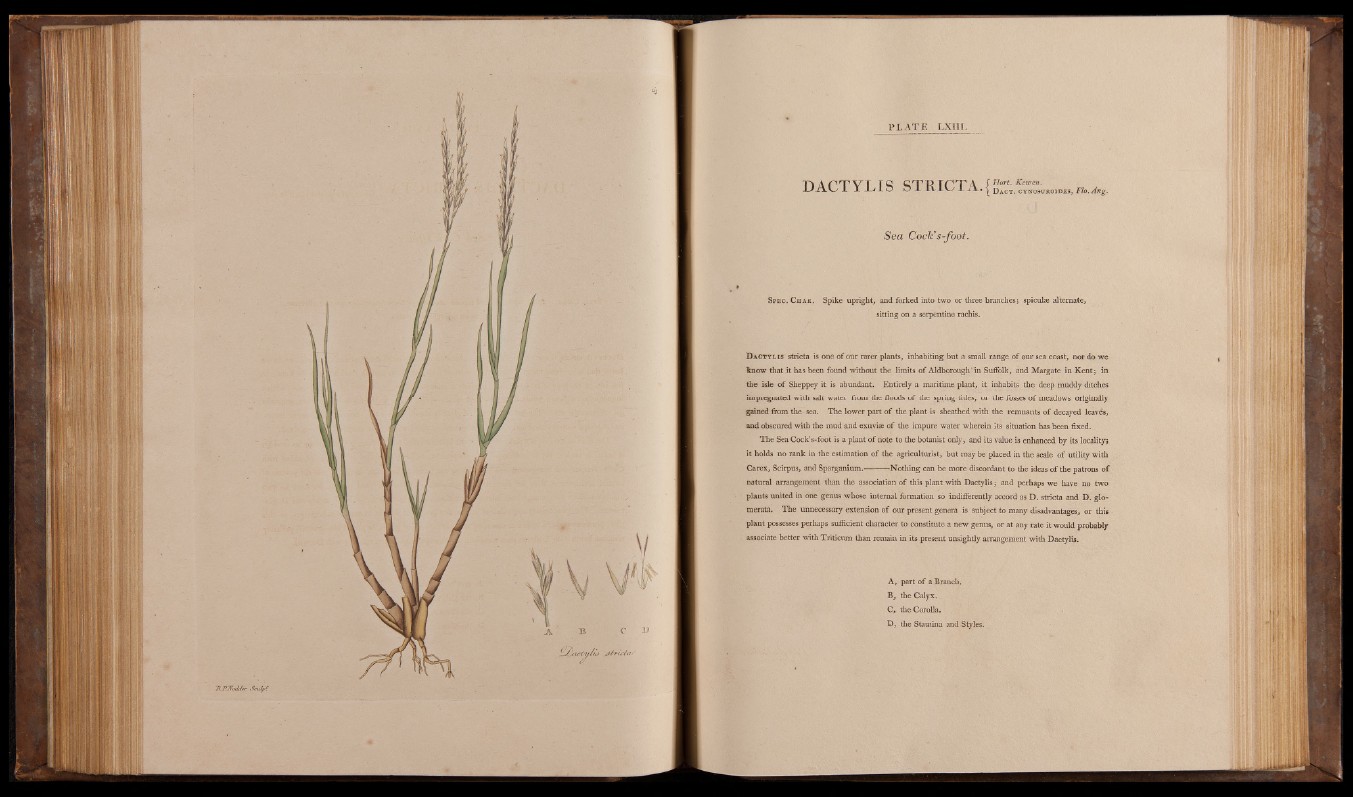
DACTYLIS C n P T } T C T A C Hort. Keiven.
^ x | D a c t . c y n o s u k o id .es, Fh.Ang.
Sea CocYs-foot.
Spec. Char. Spike upright, and forked into two or three branchesj spiculae alternate,
sitting on a serpentine rachis.
Dactylis stricta is one o f our rarer plants, inhabiting but a small range o f our sea coast, nor do we
know that .it has been found without the limits o f Aldborough’in Suffolk, and Margate in Kent; in
the isle of Sheppey it is abundant. Entirely a maritime plant, it inhabits the deep muddy ditches
impregnated with salt water from the floods of the spring tides, or the fosses of meadows originally
gained from the sea. The lower part of the plant is sheathed with the remnants o f decayed leaves,
and obscured with the mud and exuviae of the impure water wherein its situation has been fixed.
The Sea Cock’s-foot is a plant o f note to the botanist only, and its value is enhanced by its locality;
it holds no rank in the estimation of the agriculturist, but may be placed in the scale o f utility with
Carex, Scirpus, and Sparganium.--------- Nothing can be more discordant to the ideas o f the patrons o f
natural arrangement than the association o f this plant with Dactylis j and perhaps we have no two
plants united in one genus whose internal formation so indifferently accord as D. stricta and D. glo-
merata. The unnecessary extension o f our present genera is subject to many disadvantages, or this
plant possesses perhaps sufficient character to constitute a new genus, or at any rate it would probably
associate better with Triticum than remain in its present unsightly arrangement with Dactylis.
A, part o f a Branch.
B, the Calyx.
C, the Corolla.